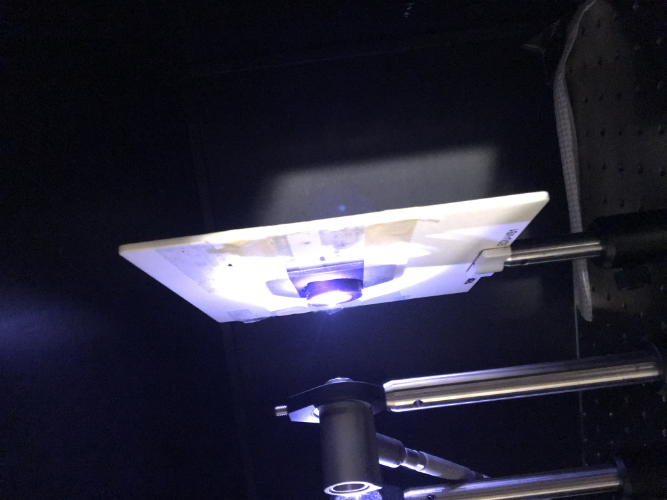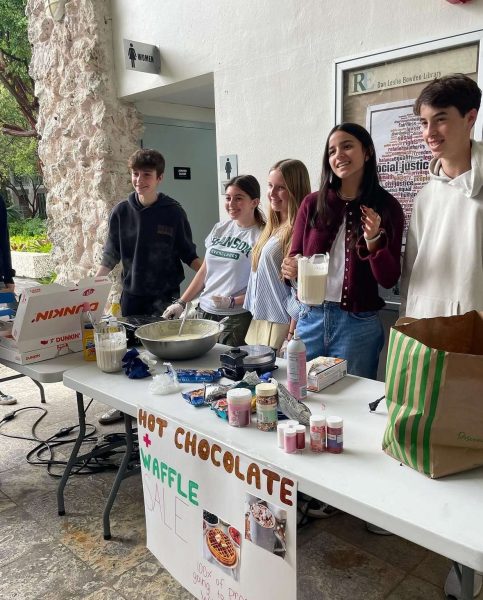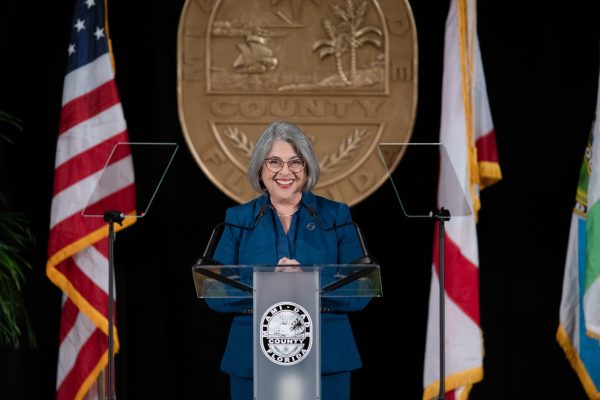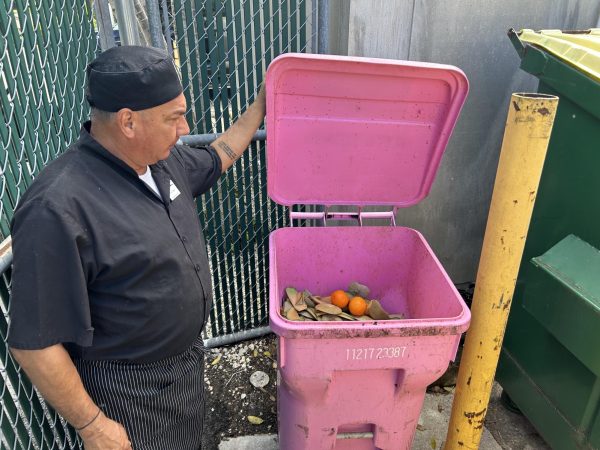Laser Focused
Superman and Cyclops share one thing in common: “heat vision.” Both comic heroes amaze audiences by shooting fiery optic blasts, or laser beams, at their enemies. In their time at RE, Max Vallone ’22 and Gideon Shaked ’22 have developed their own form of laser vision: a state-of-the-art laser-induced breakdown spectroscopy (LIBS) system that is used by students weekly in RE’s Young Researchers Program. Whereas most superheroes are miraculously born with their powers or suddenly discover them later in life, Vallone and Shaked had to build it.
In 2019, the Ransom Everglades Science Department received a highly specialized laser from joint developers Dr. Ted Caplow P’25 and Nathalie Manzano, of the Miami Science Barge and Inventors-in-Residence program at the Frost Science Museum. Caplow shared that “We moved it to Ransom Everglades after seeing that students as young as 15 or 16 were doing remarkable and important toxicological research with the laser.” The laser, however, had not been set up for the purpose that it was intended for: to test liquid samples with laser-induced breakdown spectroscopy.
Biology and Anatomy teacher Dr. Claudia Ochatt turned to Vallone, a robotics team member, to help redesign the laser for RE purposes during the summer break of 2019. Vallone ended up being the missing puzzle piece that Dr. Ochatt’s group needed to allow the device to fit the needs of RE students in the laboratory. “I was working as a camp counselor at Ransom camp in the robotics room, and Dr. Ochatt came in and asked if anyone in robotics was willing to come and help them solve an issue. After walking over to the lab and chatting with them and seeing what they needed, I was able to start helping them that summer, and I expanded to being a member of the lab both the next two years, and I plan to continue that this summer,” he shared. Shortly after, Shaked volunteered to help design the software.
Designing a system that could position samples precisely while functioning simply enough for student use was no easy task. In fact, in the first design iteration, Shaked found that “the largest challenge we faced was in merging the software and hardware. Making each individual component of the hardware took each of us actually not much time, but putting it all together in the final assembly line testing took a very long time because we each only understood one side of the project.” The hardware is a 5-axis positioning system connected to a Raspberry Pi, a small computer, which provides an interface for the user to control laser functions.
At every step of the design process, Vallone and Shaked had to collaborate in their efforts, merging their individual components of the software and hardware to produce a functioning laser. Dr. Ochatt found that both needed “time that was individually protected to think and tinker,” which allowed them to then “come together to blend their ideas and debrief.”
Shaked added that “the work that we actually had to do together was just defining a specification that both of our sides of the project had to meet in order to work together seamlessly. The hardware had to meet a certain specification for the software to properly run on it, and the software had to meet a certain specification for it to properly interface with the hardware, to control the hardware. Finding that was pretty tricky because we had to put our different areas of knowledge together to make something that actually made sense across both areas of knowledge.”
Another obstacle the two encountered involved making the laser easy for student use. “We wanted to make something that people could be able to use after working with it for five minutes, so writing appropriate documentation and making software easy to use with clear error messages to tell the user what they were doing wrong was very tricky,” Shaked said. Through feedback from YREP members and Dr. Ochatt, Shaked and Vallone learned to adjust the system to fit the needs of researchers as they shot metals weekly. In fact, the laser is currently on its 12th iteration and is updated often to fit research needs.
Currently, the laser serves as one of the most crucial tools for scientific research for STEM students at Ransom. YREP student Sofia Miranda ’23 uses the laser weekly and explained how the device works. “The young researchers use the laser to shoot at agarose and solid metal samples. When the pulsed laser beam hits the sample, a micro-plasma is created on the sample surface and emits light, which provides data. This data helps us analyze the metal composition of each sample.” In layman terms, the laser hits the surface of the metal and collects data on its composition. Vallone believes that “by using the laser, by using other equipment that we are acquiring, the lab is really expanding to do professional-level research and house some of the most innovative research opportunities” at RE.
Vallone and Shaked’s technical innovations have even made waves beyond the RE community. After Vallone presented the laser at a scientific symposium, a company called Thorlabs modified his design with a more precise positioning system and put it out on the market. In July 2021, Shaked went on a shark research trip with an outside marine conservation organization in Biscayne Bay. To his surprise, he found the lead scientist collecting and analyzing shark blood samples using the same technology that he had created. In Dr. Ochatt’s view, “through laser-induced spectroscopy, we can find the sources of contamination” in Biscayne Bay and help our community.
There is no question that Vallone and Shaked have left a scientific legacy. Shaked has already begun training underclassmen to use and even improve the laser. Dr. Ochatt explained that Sofia Miranda, Victoria Miranda ’24, Miles Heller ’24, and Francisco Rivas Gomez Vasquez ’24 have begun designing “a second-generation laser” to create an even smoother and more efficient system. Shaked added that he hopes students “will continue to refine it and continue to change it, and I believe they will. I also hope that it will be used for impactful research within the YREP program because so far it’s been really helpful for people’s use of the laser.”
Dina Kaplan '22 is a staff writer for The Catalyst. She covers local news for the newspaper.






